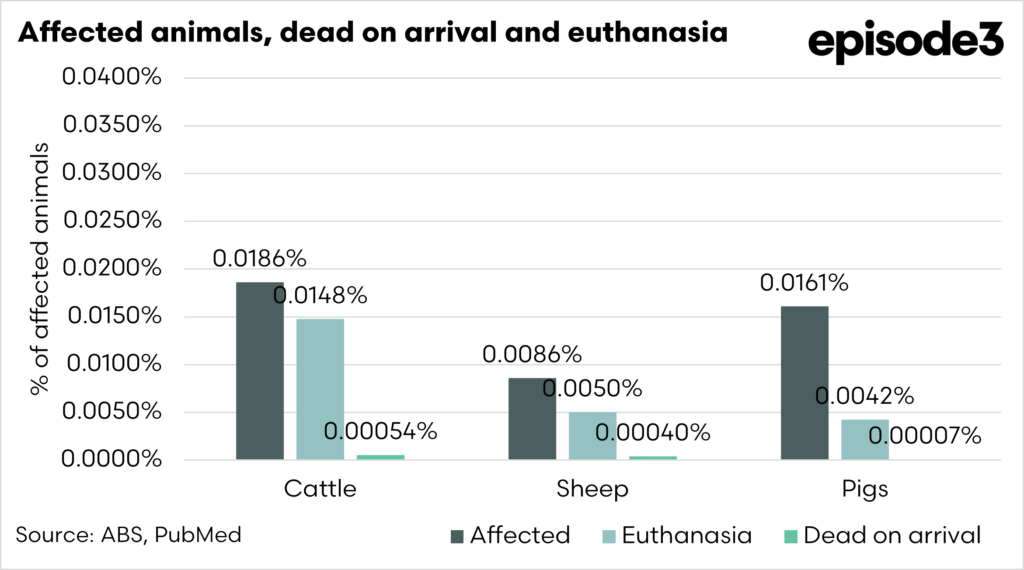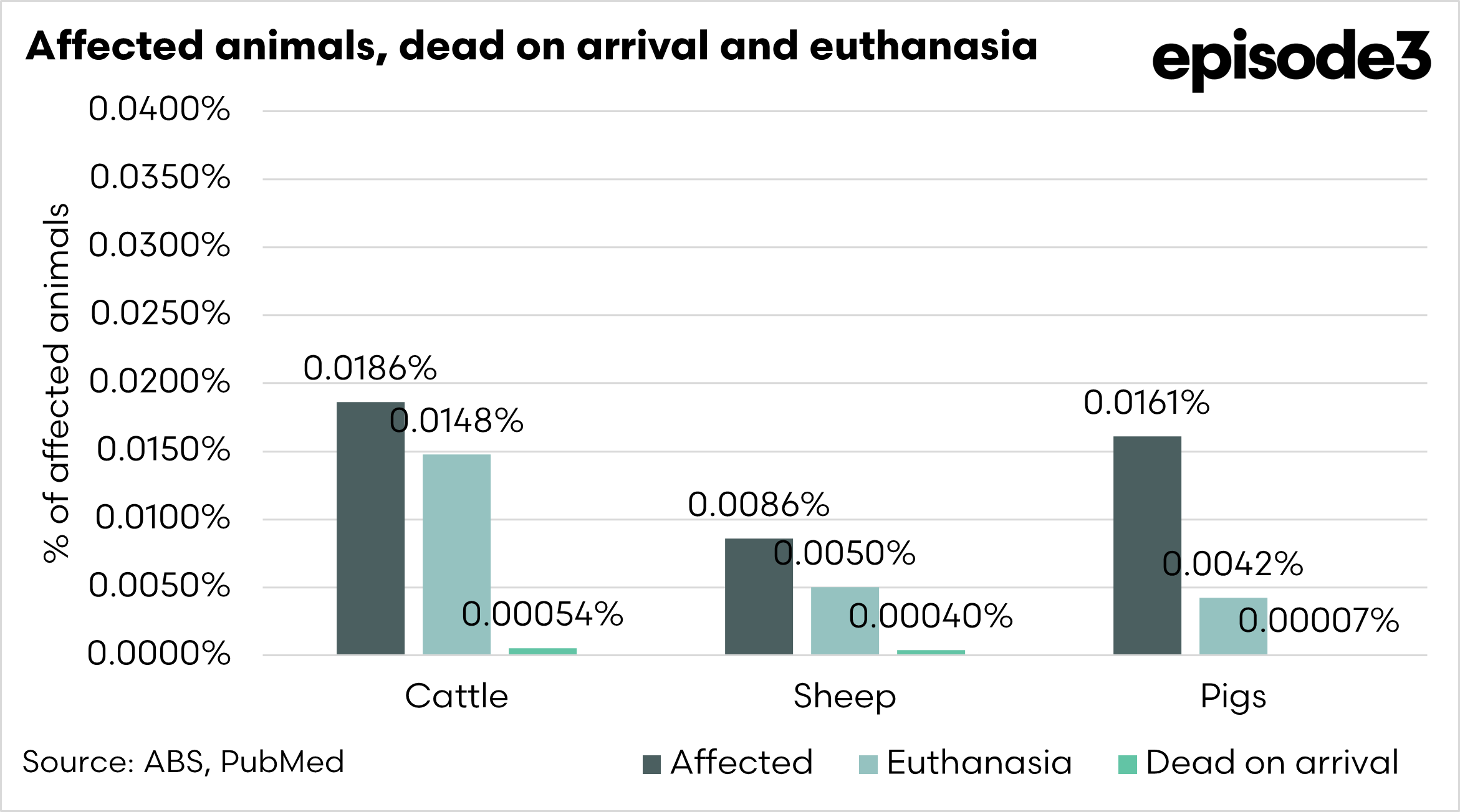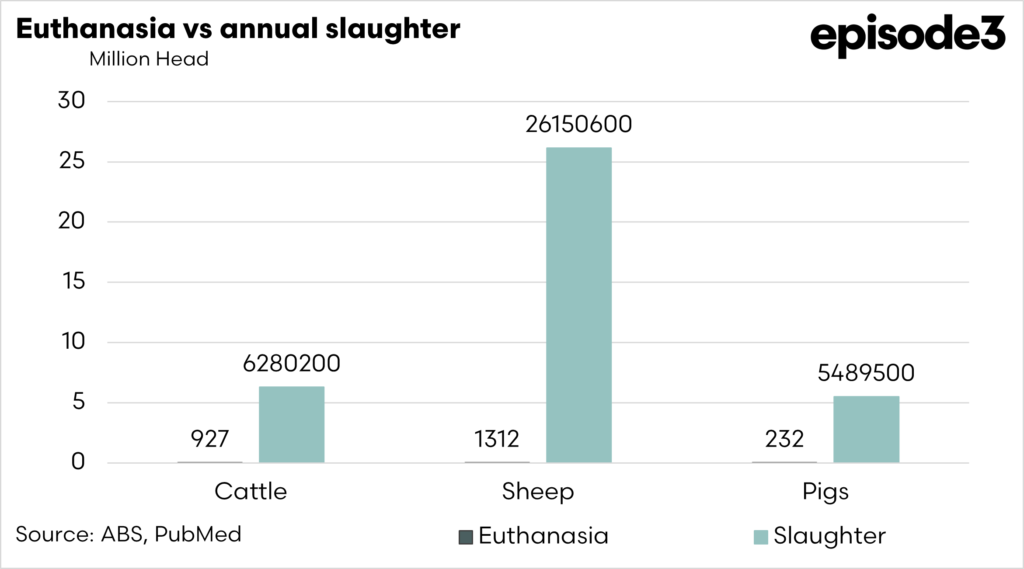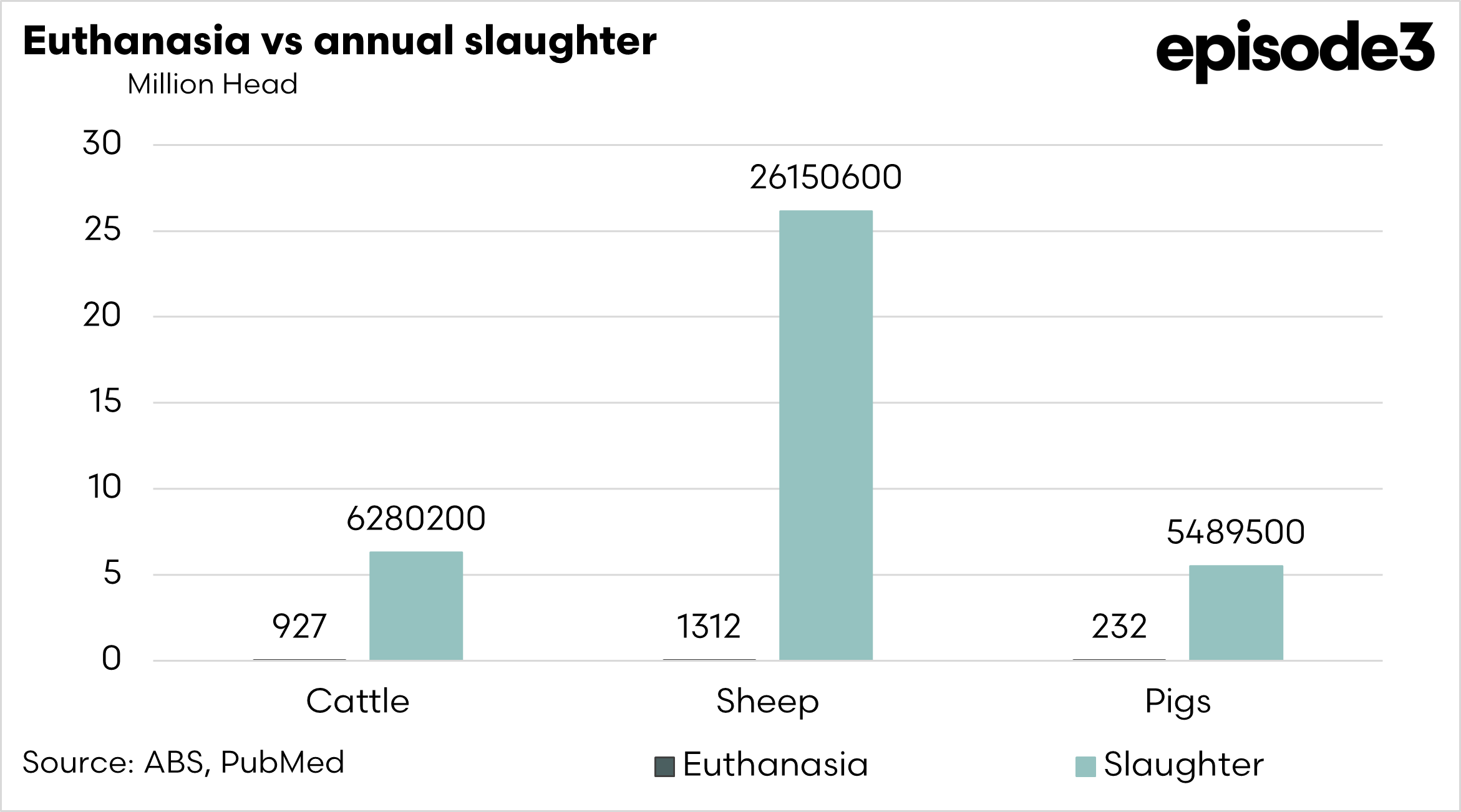Two in 10,000: The vital context of animal welfare that the Guardian didn’t include
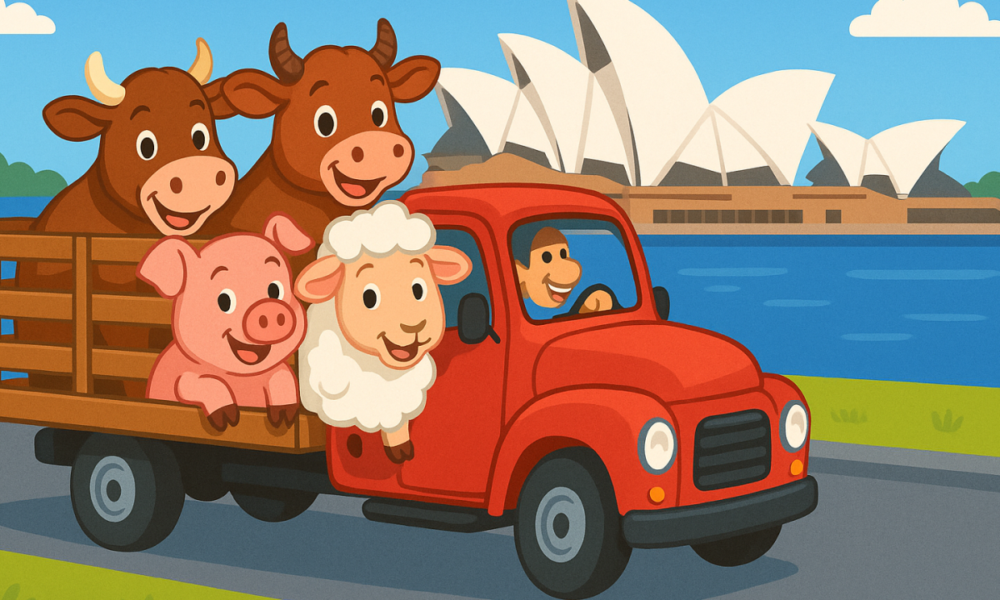
A recent study from Curtin University and a follow-up article in The Guardian claim that thousands of animals are being euthanised or dying after being transported to Australian export abattoirs, based on welfare reports from 2020/21.
They are correct, thousands are being euthanised. This sounds alarming, but let’s take a breather before we ban the industry.
The situation is far less dramatic when viewed in context. It shows that Australia’s livestock industry is doing an outstanding job in terms of animal welfare. The data has to be understood in the broader context of the Australian livestock industry. At EP3, we analyse agricultural markets every day (and often nights), and it’s always important to delve a little further.
In 2020/21, just over 1100 cattle, 2200 sheep, and 880 pigs were affected by welfare issues during transport. This may seem significant for the uninitiated, but these animals were part of a supply chain transporting over 38 million animals that year. In 2020/21, more than 6.2 million cattle, 26 million sheep, and 5.5 million pigs were processed at abattoirs within Australia.
That means the rate of affected animals was:
- 0.0186% for cattle
- 0.0086% for sheep
- 0.0161% for pigs
In basic terms, this translates to fewer than 2 out of every 10,000 animals transported to abattoirs. This is a relatively insignificant number of animals, and I would bet that it was among the lowest incident rates in the world.
These extremely low figures suggest that transport is managed effectively and humanely for the overwhelming majority of livestock.
Where incidents do occur, the data shows that animals are euthanised quickly. While this might sound confronting, it reflects the fact that welfare protocols are being followed.
Australia is introducing voluntary assisted dying laws across its states, allowing those with terminal illnesses to choose a dignified and compassionate end to their lives. This reflects a broader societal principle: when suffering is unavoidable, we prioritise minimising pain and ensuring a humane end. The same thinking applies to animal welfare when livestock are injured or unfit to recover, prompt euthanasia is a deliberate and ethical decision made to prevent further suffering.
When animals are injured or in distress, abattoirs and inspectors act swiftly to prevent further suffering. This is part of a system designed to prioritise animal wellbeing at all supply chain stages.
Australia has some of the world’s most rigorous standards for animal transport, and export abattoirs operate under strict oversight, including veterinary inspections and independent audits. The industry takes animal welfare seriously, not just because it’s a legal requirement, but because producers, transporters, and processors all understand that good animal care is central to the integrity, sustainability and ultimately profitability of Australian agriculture.
That said, the issues raised in the study, such as inspection delays and concerns about oversight resources, are worth addressing. The agricultural industry constantly evolves, learns, and applies its experience to reduce adverse animal welfare issues.
What’s important is that these discussions happen with the whole picture in view, not selective data and reporting. Analysis of welfare matters plays a vital role in holding systems to account. Still, it’s also essential to include context, such as the vast scale of livestock movements, the low rate of incidents, and the sector’s commitment to continual improvement.
Australia’s livestock industry should take the feedback seriously and be confident that it is operating to a high standard.
When the full context of these animals is taken into account, we should be proud that the number of animals suffering is extremely low, and that they are treated quickly.
The data shows that the overwhelming majority of animals are transported safely and humanely. That’s something worth recognising as the industry works to strengthen animal welfare even further.
With context, what appears in a report as seemingly antagonistic towards the livestock industry becomes quite positive.

